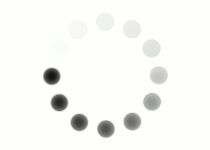Are you ready to take this lesson's quiz? These questions will help you find out. Make sure you understand why each correct answer is correct—if you don't, review that part of the lesson.
Which statement is correct?
- Anions are negatively charged ions formed by losing electrons.
- Anions are positively charged ions formed by gaining electrons.
- Cations are negatively charged ions formed by gaining electrons.
- Cations are positively charged ions formed by losing electrons.
Negative ions are formed by gaining electrons.
Gaining electrons creates a negative charge.
Cations are positively charged ions.
Losing electrons creates a positive charge.
Which element is likely to form a 1- charge?
- Na
- P
- Cl
- Ca
Elements in Group 1 will lose their one valence electron to form a 1+ charge.
Elements in Group 15 have five valence electrons, so they will gain three to form a 3- charge.
Elements in Group 17 have seven valence electrons, so they will gain one to form a 1- charge.
Elements in Group 2 will lose their two valence electrons to form a 2+ charge.
What is the name of Ti3+?
- titanium ion
- titanium (III) ion
- titanide ion
- titanic ion
Only s-block ions are named with just the element's name plus the word ion.
Non-s-block ions are polyvalent, which means they can form multiple charges. Therefore, their name must specify the charge in that instance by using a Roman numeral.
Only anions are named by changing the end of the element's name to “-ide.”
Non-s-block ions are polyvalent, which means they can form multiple charges. Therefore, their name must specify the charge in that instance by using a Roman numeral.
How many electrons are in \(_{7}^{15}\text{N}\)?
- 0
- 5
- 7
- 15
A chemical symbol with no charge means the number of protons and electrons are equal, not that there are no electrons.
Nitrogen has five valence electrons, but that does not include ALL of its electrons. Remember that a chemical symbol with no charge means the number of protons and electrons are equal.
A chemical symbol with no charge means the number of protons and electrons are equal.
Nitrogen is in Group 15, but this is not the number of electrons. Remember that a chemical symbol with no charge means the number of protons and electrons are equal.
How many protons, neutrons, and electrons are in \(_{38}^{88}\text{Sr}^{2+} \)?
- 38 protons, 50 neutrons, 36 electrons
- 38 protons, 88 neutrons, 36 electrons
- 38 protons, 50 neutrons, 40 electrons
- 88 protons, 38 neutrons, 40 electrons
The left subscript represents protons. The left superscript represents the sum of protons and neutrons. The right superscript represents the charge (subtract this from the protons to determine electrons).
The left subscript represents protons. The left superscript represents the sum of protons and neutrons. The right superscript represents the charge (subtract this from the protons to determine electrons).
The left subscript represents protons. The left superscript represents the sum of protons and neutrons. The right superscript represents the charge (subtract this from the protons to determine electrons).
The left subscript represents protons. The left superscript represents the sum of protons and neutrons. The right superscript represents the charge (subtract this from the protons to determine electrons).
Summary
Questions answered correctly:
Questions answered incorrectly:
